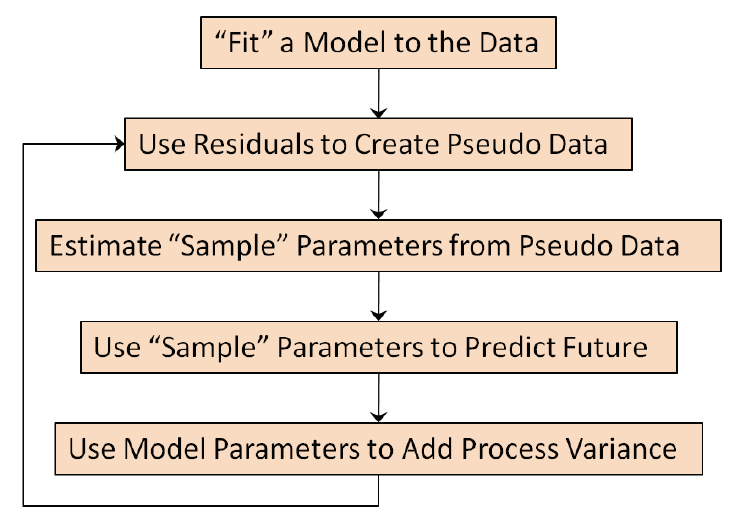9.1 Introduction
Paper focus on over-dispersed Poisson (ODP) bootstrap
Incremental losses are modeled as ODP random variable
Goal is to generate a distribution of possible outcomes
Just FYI, not important for exam
Other papers on bootstrap
-
Statistics: Bradley Efron (1979)
-
Actuarial: England & Verrall (1999; 2002), Pinheiro, et al. (2003), Kirschner, et al. (2008)
Practical motivation for modeling loss distribution
Definition of actuarial estimate in ASOP 43 can be based on a first moment from a distribution
- While ASOP 36 (SAO) focus on deterministic point estimates
SEC is looking for more information on reserving risk in the 10-K
Rating agencies are building dynamic risk models and welcome actuary input
Companies that use dynamic risk models for internal risk management need unpaid claim distributions
SII and IFAS are moving towards unpaid claim distribution
Advantages of bootstrap
Generates a distribution of the estimate of unpaid claims
Can be tailored to statistical features of our data
Reflects that loss distn are usually skewed to the right
Disadvantages of bootstrap
- Takes more time to create, but okay once set up
9.1.1 Stochastic vs Static Model
ODP bootstrap is a specific form of GLM
Benefit of GLM: It can be specifically tailored to the statistical features found in the data
- Contrast with algorithms that force the data to be fit to a static model (fig. 9.1)


Figure 9.1: Stochastic vs Static Model Diagram
Just FYI, not important for exam
Some authors define a model as having a defined structure and error distribution, so under this more restrictive definition bootstrapping would be considered to be a method or algorithm
However, using a less restrictive definition of a model as an algorithm that produces a distribution, bootstrapping would be defined as a model